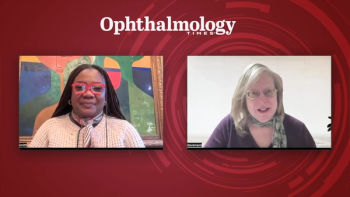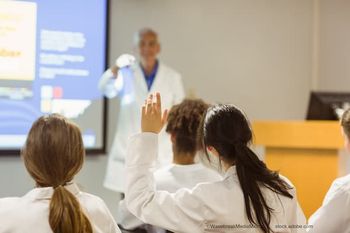
Q&A: First time results of VOY-101 for geographic atrophy
Key Takeaways
- VOY-101 gene therapy for GA showed safety and tolerability in phase 1, with no significant adverse effects observed.
- The therapy uses a single intravitreal injection to deliver CFH gene protection, potentially offering long-term treatment.
Omer Trivizki discusses promising results of VOY-101, a gene therapy for geographic atrophy, highlighting safety and next steps in ongoing research.
Omer Trivizki, MD, MBA, Deputy Chair working in Tel Aviv Medical Center presented, "First time results of VOY-101, a novel, complement-modulating gene therapy for geographic atrophy." This presentation was given at the annual scientific meeting of the American Society of Retina Specialists, which was held in Long Beach, California, from July 30 through August 2, 2025.
Ophthalmology Times had the opportunity to speak with Trivizki at this event to learn more about this research and its next steps.
Note: The following conversation has been lightly edited for clarity.
Ophthalmology Times: What did your presentation cover at the ASRS 2025 meeting?
Omer Trivizki, MD, MBA: So this is the first time we [are] showing the safety and tolerability of VOY-101, which is a gene therapy supposed to treat GA patients, our non-neovascular patients. In our talk, we showed that VOY-101, is safe and tolerable.
OT: What was the design of this trial?
Trivizki: In the study, we enrolled 24 patients, and we followed them for 12 months, and we showed there is no dose limiting toxicity, no systemic adverse effects and no oculus adverse effects. There was a really mild, transient intraocular cell effect that we observed during the study, which passed with topical steroids only, and eventually all patients were off steroids with no recurrency of any vitreous or AC cells.
OT: What are the next steps for this research?
Trivizki: So eventually that led us to the conclusion that we can move ahead to the phase 2, which already started and we dosed the first patient, as I said, 5 weeks ago.
OT: Can you speak to how this treatment works?
Trivizki: So the MOC, the mechanism of this special treatment, is highly sophisticated, and it's based on genetic work that has been done by Greg Aggeman, and the idea is to provide patients with what we call protection, which is [Complement Factor H gene], CFH. CFH protection is a protein that was found to protect patients with GA. Unlike the risk variant, where we know and was shown in the previous literature, that patients with CFH at risk actually develop AMD. The idea here is to provide with 1 intravitreal injection, the protection effect of CFH. The idea of gene therapy is to be able to use the eye as a production for this specific protein, so with a single injection, you can actually treat the patient for the long term.
OT: Where were the sites for this trial?
Trivizki: We had 6 sites for this study in 3 different countries. Most of the patients came from Tel Aviv. So after we showed safety and tolerability of this phase 1 of VOY-101, we already started enrolling for JOURNEY, the phase 2 of the study. Actually, the first patient was dosed already 5 weeks ago in Tel Aviv, and we hope to get results very soon for the study as well. Patients [are] supposed to be followed for 12 months, meaning their primary endpoint is 12 months for the patients.
Newsletter
Don’t miss out—get Ophthalmology Times updates on the latest clinical advancements and expert interviews, straight to your inbox.





